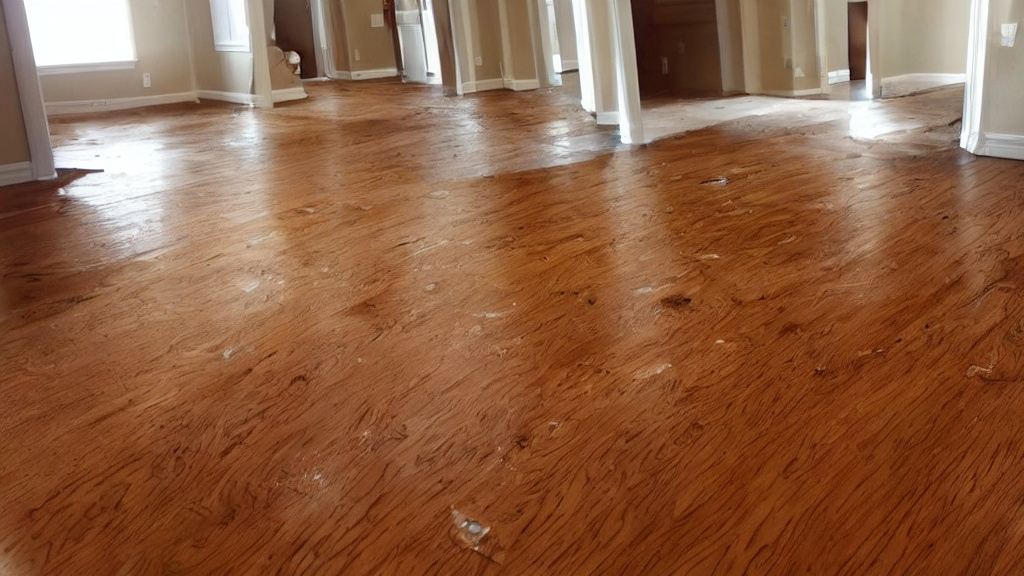Introduction
Water damage is a homeowner’s nightmare, and when it affects hardwood floors, the stakes are high. Unlike outdoor decking, interior hardwood floors aren’t typically designed to withstand excess moisture. Whether it’s from flooding, plumbing leaks, or even just steam from daily activities, water can wreak havoc on hardwood floors if not addressed promptly and effectively. So, can you repair water-damaged hardwood floors? The answer lies in understanding the signs of damage and employing the right techniques for repair and restoration.
Recognizing the Signs of Water-Damaged Hardwood Floors
Before diving into repair methods, it’s crucial to recognize the signs of water damage. These include:
- Warping or Buckling: Warped or buckled floorboards indicate excess water absorption, causing them to swell and distort.
- Discoloration: Visible dark spots or patches on the wood indicate moisture penetration, carrying dirt or tannins that affect appearance.
- Soft and Spongy Wood: Excessive water weakens wood fibers, leading to a soft, spongy texture and potential rot.
- Mold and Mildew: The presence of mold or mildew indicates prolonged exposure to moisture, posing health risks and emitting unpleasant odors.
Assessment and Treatment of Water-Damaged Hardwood Floors
Assessing the extent of water damage is crucial before determining the appropriate treatment. Here’s what you can do:
- Cleaning and Preparation: Begin by using a high-quality wood cleaner to remove dirt and debris, preparing the surface for further treatment.
- Wood Oil Finish: Apply a plant-based wood oil finish to nourish the wood and enhance its resilience against further water damage.
- Regular Maintenance: Implement a schedule for regular maintenance to preserve the integrity of your hardwood floors and prevent future damage.
If the damage is severe, replacement of floorboards may be necessary, requiring professional intervention to ensure proper installation and long-term protection against water damage.
Handling Water Damage on Wooden Floors: A Step-by-Step Approach
Understanding the extent of water damage is essential for effective repair. Here’s a step-by-step approach to handling water damage on wooden floors:
1. Swelling of the Wood:
- Swelling is a common outcome of water damage, causing areas of the wood to enlarge and edges to raise.
2. Buckling of the Wooden Floor:
- Buckling indicates serious water damage, resulting in distorted floorboards due to detached adhesives.
3. Discoloration:
- Floods or prolonged exposure to water can lead to discoloration of the floor, along with mold growth and unpleasant odors.
4. Water Accumulation:
- Address areas of water accumulation promptly to prevent further damage to the wooden flooring.
5. Odor:
- Mold growth due to moisture and low air circulation can result in unpleasant odors, indicating the need for immediate action.
Judging the Level of Damage
Assessing the level of damage is crucial for determining the appropriate repair method. Consider the type of wood used, adhesives employed, and quantify the level of moisture using specialized tools like dielectric meters or insulated pin probes.
Repairing the Floor
Depending on the extent of damage, various repair methods can be employed:
- Scraping of the Floor: For surface-level damage such as swelling or discoloration, scraping off the affected area may suffice.
- Dehumidification: Use dehumidifiers and improve ventilation to remove moisture from the flooring and prevent further damage.
- Sandpaper and Steel Plates: Remove damaged layers of finish using sandpaper or steel plates, restoring the surface to its original condition.
- Air Conditioners and Humidity Stabilizers: Introduce dry air using air conditioners and humidity stabilizers to accelerate the drying process and reduce moisture content.

When to Replace Your Flooring
In cases of severe damage beyond repair, replacement may be the only option:
- If moisture levels exceed a certain threshold, rendering the wood irreparable.
- If water has penetrated the sub-floor, causing structural damage.
- If floorboards have buckled, making them unfit for reinstallation.
Refinishing
In some cases, refinishing may be a viable option for addressing surface-level damage:
- Sanding the floor to remove the top layer of finish and applying a new coat can restore the floor’s appearance and integrity.
Also Read: Water Damage Restoration Services in Miami: Restoring Peace of Mind
Conclusion
Water damage can devastate hardwood floors, but with prompt action and the right repair techniques, restoration is possible. By understanding the signs of damage, assessing the extent of water damage, and employing appropriate repair methods, you can revive your water-damaged hardwood floors and preserve their beauty and functionality for years to come. Remember, prevention and timely intervention are key to minimizing the impact of water damage on your precious hardwood floors.










